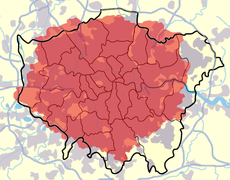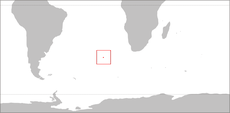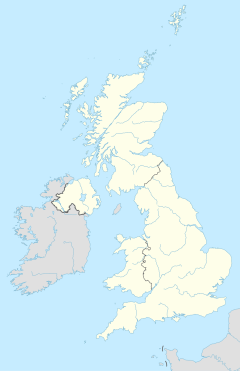020
| United Kingdom area code for London | |
|---|---|
| National calling | 020 |
| International calling | +44 20 |
| Conservation | No |
| Active since | 1 June 1999 |
| Previous code(s) | 0171, 0181 |
| Earlier code(s) | 071, 081; 01 |
| Number format | 020 xxxx xxxx |
| Coverage | |
 Approximate coverage of 020 code (red), compared to Greater London boundary (black) Approximate coverage of 020 code (red), compared to Greater London boundary (black) Location of Tristan da Cunha Location of Tristan da Cunha |
|
| Area served |
Bushey Heath Chigwell Elstree Ewell London Loughton Thames Ditton Tristan da Cunha |
| List of United Kingdom codes | |
020 is the national dialling code for London in the United Kingdom. The area it serves, which includes most of Greater London and some adjacent areas, was first allocated the STD code 01 in 1959. After a sequence of changes in the 1990s, culminating with the Big Number Change, the current 020 code became active on 1 June 1999. All subscriber numbers within the area code consist of eight digits and it has capacity for approaching 100 million telephone numbers. The code is used at 170 telephone exchanges as part of the largest linked numbering scheme in the United Kingdom. In common with all other British area codes the initial '0' is a trunk prefix that is not required when dialling London from abroad.
The 020 dialling code is also used by the Foreign and Commonwealth Office Telecommunications Network, provided by Global Crossing, and is one of two dialling codes for the remote South Atlantic island of Tristan da Cunha.
Before the introduction of national dialling codes, the area now served by 020 operated as a large multiple telephone exchange system known as the London telephone area. The first exchange in this area, Central, was opened in the City of London on 1 March 1902. The director telephone system was developed so that subscribers in London could call each other as part of a linked numbering scheme regardless of whether they were on a manual or automatic local exchange.
In 1927, Holborn, the first Director automatic exchange in London, was cutover at midnight on Saturday 12 November. As it was a largely business exchange, most subscribers did not use the new system until Monday 14 November. The changeover was successful, although there were some delays as the subscribers were not familiar with dialling. Bishopgate and Sloane exchanges were to follow in six weeks, followed by Western and Monument exchanges. As the London area contained 80 exchanges, complete conversion would take many years.
...
Wikipedia

